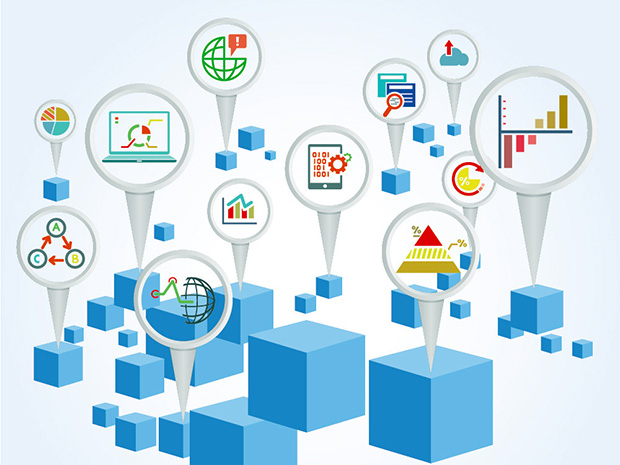Future of IT will be driven by SMAC stack and connectivity


Understanding the future of IT begins with understanding what products and technologies will take center stage in the coming years. Although there are no safe bets, examining current trends and projections can help paint a picture for how IT is evolving.
Many of the current conversations regarding enterprise IT revolve around the concept of the SMAC stack. SMAC stands for social, mobile, (big data) analytics, and cloud; and it is a reference to the growth of these tools and platforms in business technology stacks.
SMAC will continue to play a major role in the next few years, and it will be complemented by BYOD and the greater trend of consumerization in driving what products IT will invest in. The near future of IT will ultimately be driven by connectivity — not just connectivity of devices and networks, but the connectivity of employees to one another.
Beyond just the SMAC stack, here are the technologies and products that will define IT in the coming years, and how you can make a game plan to take advantage of them.
Mobility
To better understand the potential impact of new technologies, you must first look at the average daily workflow of an employee. According to Max Dufour, a technology and strategy partner at Harmeda who works as an interim CIO for different businesses, "anything at the core of the user's day-to-day is going to yield the largest returns and therefore impact."
For many knowledge workers, one of the biggest impacts can come with the devices they use to get work done. The late 2000s saw a meteoric rise in the popularity of smartphones in the enterprise, followed by the tablet at the turn of the decade. Now, tablets are succeeding where netbooks failed, providing a more 'mobile' alternative to a laptop.
"Phones have been supplemented with tablets, and now both are being supplemented with 'phablets,'" said Eric Reed, CTO of GE Capital. "The days of being tethered to a desk with a desktop or laptop are coming to an end. The processing power — and now even screen sizes — of these mobile devices is changing the idea of computing and will continue to do so."
Mobile is likely to change the consumer-facing aspects of most businesses as well. As CompTIA president and CEO Todd Thibodeaux notes, NFC technology in use with Google Wallet and Apple Pay are likely to change payment processing and how consumer think about their money.
Cloud
As workers become increasingly mobile, the demand for cloud services will grow as well. Cloud and mobile are not mutually dependent, but they do benefit one another in terms of encouraging productivity and collaboration.
According to Dufour, products that support collaboration and scale across all platforms will become essential. Traditional office suites, such as those provided by Microsoft, are now delivered through the cloud, providing alternatives to cloud incumbents like Google. Additionally, cloud solutions for specific needs such as CRM or storage will continue to gain traction, potentially becoming the foundation of some organizations.
While traditional cloud providers and SaaS products are the easiest to recognize, it's crucial to understand how the cloud will affect the data center as well.
"Of equal importance are the emerging services-in-the-cloud offerings as well as the growing emergence of 'appliances' that bring those types of capabilities into the traditional data center offerings, which is of great interest to those industries where cloud — at least public cloud — is not a viable option today," Reed said.
Big data
Perhaps one of the biggest impacts on business IT will be the advancement of tools to collect, process, and measure big data. Companies have access to potentially limitless data and new tools give insight into previously untapped insights.
"It starts with how we will store and enable the rapid access to this amount of data (some of it structured, much of it unstructured), how it will be identified and aligned (you may choose to use the word 'tagged'), how it will be retrieved and analyzed, and how it will then be used across the enterprise," Reed said.
While there has been an explosion of new startups providing processing and analysis, big data collection will need to play a bigger role for the analysis to continue to be relevant. Some have even predicted that data curation will emerge as a larger trend and real-time data collection will be important as well.
The Internet of Things (IoT) is another piece of the big data collection puzzle that will be pivotal for IT departments in the next few years. Manufacturing and retail are the two industries that stick out, but almost all workers can benefit from data capture mechanisms available through IoT. For many IoT products, that data capture will be driven by sensors.
"We are anticipating explosive growth in the use of connected sensors," said Marty O'Brien, VP & CIO of Harman International. "The rapid pace of connected sensor deployment, combined with the increased connectivity and compatibility offered by the abundance of wireless networks, will allow for us to collect a wider scope of more granular data."
The effect
As these products move to the forefront, there will undoubtedly be some residual effects felt by the IT department. Dufour said that companies will see less help desk tickets, but IT staff will need to broaden its focus to deal with increases in new devices, products, and services. These products, he said, will likely come from different vendors, exist on multiple platforms, and roll out more frequently.
Skillsets will need to change on development and engineering teams as well. Reed said that hiring managers will need to think outside the box when it comes to staffing teams, as certain non-traditional IT skill sets will become more prevalent with these IT products.
All-in-all, the escalation of these specific technologies and products will provide an exciting new framework for employees to get work done. However, it is vital to consider the possible ramifications and ill-effects and plan for them.
"It is also important to note that while these new products present enormous opportunities, they also introduce risk with regards to personal data privacy, compliance with local regulations, exposure to hacking and malware, ability to remotely upgrade and patch, and more," O'Brien said. "As these products come to bear, we’ll likely see the IT function transcend into the product development process and collaborate with legal, HR and other functions to ensure that all these risks are addressed and documented."